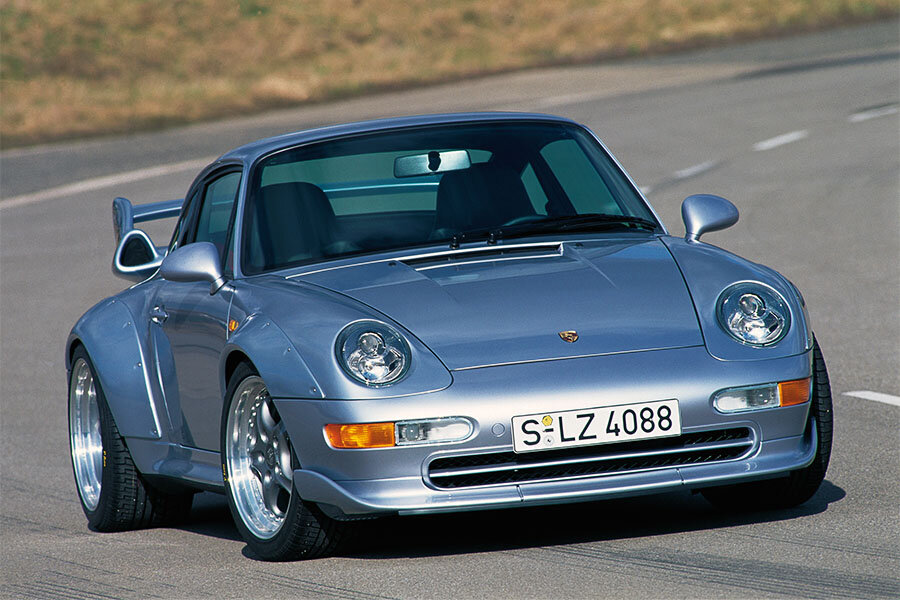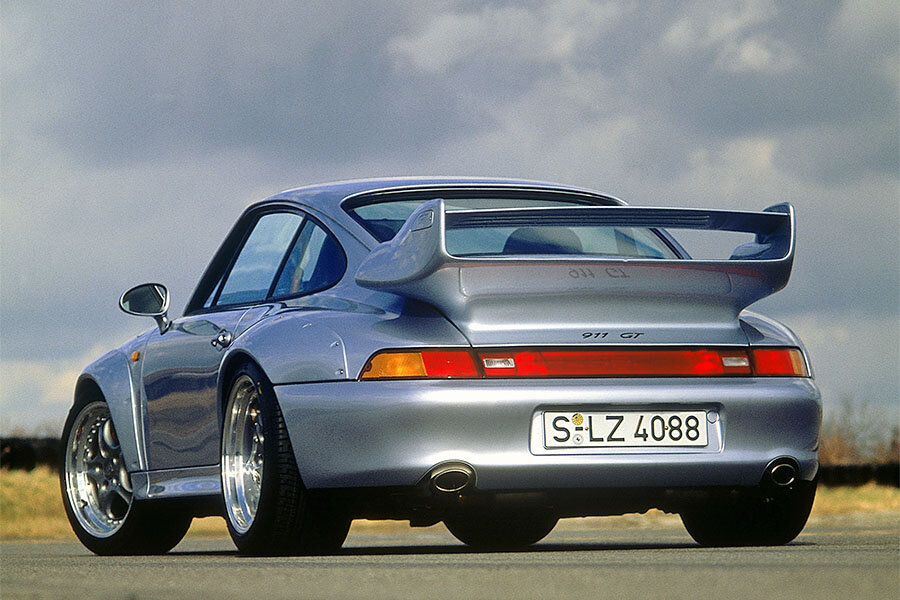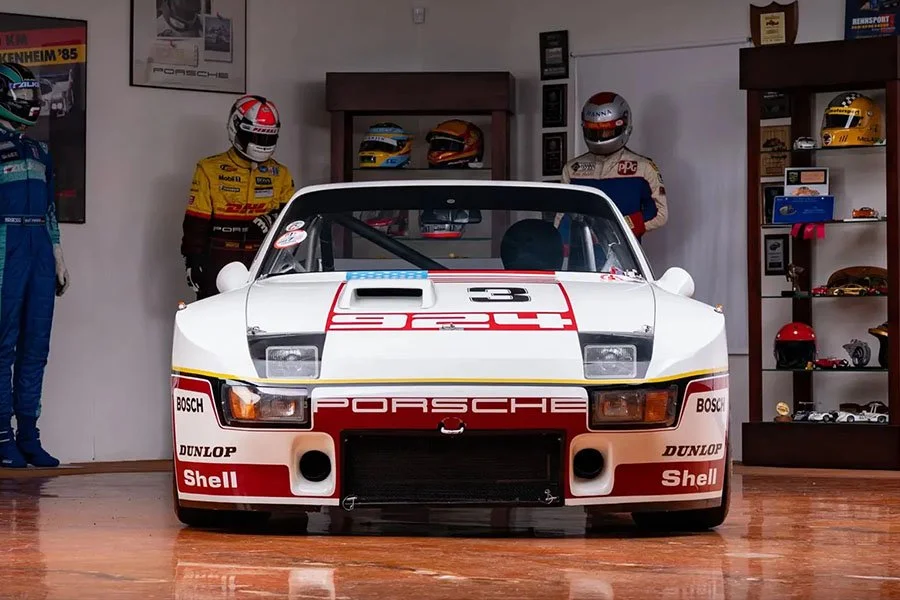Guide: Porsche 911 GT (993 GT2) - a Historical & Technical Appraisal
/BACKGROUND
Throughout the 1980s, the World Sportscar Championship and top flight prototype racing in general had been in rude health; an abundance of manufacturers were taking part and competitive cars for privateers meant grids were normally packed.
However, when the FIA tried to phase in a 3.5-litre normally aspirated engine rule from 1989, costs began to rise exponentially. With turbocharged Group C cars no longer eligible from 1992 and most major economies in free fall, the World Sportscar Championship struggled for support.
As a result, the 1993 season was cancelled altogether.
What emerged in its place was the return of amateur GT racing: privateers running competition-prepared versions of genuine production cars.
With manufacturers no longer spending much, homologation requirements were slackened to the extent that, so long as one road-going version of a car had been made, racing versions were permitted to compete.
The four new classes for 1993 comprised GT1 through GT4.
Porsche initially offered its customers two new racing models for 1993: the 964-based 911 3.8 Carrera RSR and the 968 Turbo RS.
Additionally, the factory developed a unique GT1 works car: the 965-based Turbo S LM.
Having appeared at Sebring and Le Mans in 1993, the Turbo S LM was loaned to Larbre Competition for 1994 when it won the four BPR GT Championship races it contested. That season, the car ran a new 3.6-litre engine which would go on to appear in a turbocharged 993-based customer racing car for 1995: the 911 GT.
During the 1995 season, the 911 GT raced in the GT3 category. For 1996, it was moved up to the GT2 class. As a result, it is commonly referred to as the 993 GT2.
Competition in 1995 principally came from the Agusta Racing Team Callaway Corvettes until later on in the year when works cars arrived from Lotus (Esprit Sport 300) and Marcos (LM600).
The 911 GT racing car was launched at the Essen Motor Show in November 1994.
The 911 GT Straßenversion followed at the Geneva Motor Show in March 1995 where it was unveiled alongside the new series production 911 Turbo.
CHASSIS
The 993 GT was built around a galvanised steel 993 bodyshell that was enhanced with an array of high performance parts.
The existing MacPherson strut / multi-link suspension arrangement was similar to that of the recently introduced Carrera RS. 911 GTs came with a front strut brace, ball-joint mountings for the spring / damper units, thicker adjustable anti-roll bars and stiffer track rods. Link bearings were firmed up for more precise wheel control, particularly at the rear.
Stiffer springs and adjustable dampers were also fitted.
Compared to the standard 911 Turbo, ride-height was dropped and the four-wheel drive system was discarded in favour of a rear wheel drive-only set up.
Cross-drilled and ventilated 322mm brake discs and four-piston aluminium calipers were imported from the production Turbo.
Handsome new Carrera RS-style 18-inch Speedline wheels were unique to the 911 GT. Made from three-magnesium sections, they were an inch wider than the regular Turbo rims: 9-inches wide at the front and 11-inches wide at the rear.
Power steering was retained for the 911 GT but given a more direct ratio.
The standard 73.5-litre fuel tank from the 993 Turbo was switched to a long-range 92-litre unit.
ENGINE / TRANSMISSION
In the engine bay was a tuned version of the 911 Turbo’s Type M64/60 motor. It was another air-cooled all-alloy Flat 6 with dry-sump lubrication and a single overhead camshaft for each bank of cylinders.
It displaced 3600cc thanks to a bore and stroke of 100mm and 76.4mm respectively.
Unlike many other high performance manufacturers, Porsche still deemed two valves per cylinder sufficient.
Designated Type M64/60R, the 911 GT engine retained an 8.0:1 compression ratio but featured re-mapped Bosch Motronic and free-flow catalytic converters. Boost from the KKK K16 turbos was increased from 0.8 bar to 0.9 bar. A supplementary oil cooler was mounted in the nose.
Peak output was 430bhp at 5750rpm compared to 408bhp at 5750rpm for the standard 911 Turbo. The torque rating was unchanged with 398lb-ft at 4500rpm.
Transmission was via a reinforced Type G50/32 six-speed gearbox, single-plate Sachs clutch and limited-slip differential.
BODYWORK
Cosmetically, the 911 GT was transformed with massive fibreglass wheelarch extensions that were pop riveted on to cutaway fenders.
A Carrera RSR-style chin spoiler was added below the front bumper which flared outwards at the sides to integrate with the splayed arches.
Deep side skirts were added down each flank and a twin-plane spoiler was fitted above the engine.
Compared to the Carrera RSR’s wing, the GT item had enlarged ducts for the intercoolers.
The 993 already ranked as one of the most handsome iterations of the 911 and the GT was arguably the best of the bunch. Thanks to the dropped ride height, aggressive stance and sporty additions, there was little to rival it in the mid 1990s.
OPTIONS
Electric windows, air-conditioning, a driver’s airbag and a stereo were optional. The seat centres and general colour of the upholstery could be changed by special request.
Instead of bucket seats, a small number of cars left the factory with the sports seats that were an option on series production 993s.
When placing their order, buyers were given three specification levels to choose from.
Option code M001 was for racing trim, M002 was for a Comfort street version and M003 was the Club Sport street version.
M002 911 GT COMFORT
Inside, the M002 Comfort came with two-tone black and grey leather Recaro bucket seats with body coloured backs.
Seat belts were normally red or body coloured.
Door trim panels were simplified for lightness and the usual combined storage bin / armrest / grab handle was discarded. Instead, there was a simple canvas pull chord to open the door and a basic plastic handle to close it.
A small diameter non-airbag three-spoke steering wheel was fitted. Instrumentation and switchgear came from the standard Turbo.
To save weight, the rear seats were deleted along with the airbags, most of the sound insulation, the central locking and electric mirrors.
Customers could have any or all of the luxury equipment re-instated via the options list if they wished.
M003 911 GT CLUB SPORT
M003 Club Sport 911 GTs came with a fully integrated body coloured roll cage, Recaro bucket seats trimmed in fire-retardant fabric, six-point harnesses, a battery cut-out switch and fire extinguisher. The carpet and sound deadening was deleted.
To further reduce weight, a clutch disc with torsional dampers was fitted instead of a dual mass flywheel.
WEIGHT / PERFORMANCE
Even in standard M002 Comfort trim, the 911 GT was 285kg lighter than the 1575kg Turbo. It had a top speed of 189mph and 0-62mph time of 3.7 seconds.
PRODUCTION
Production started immediately after the Geneva Motor Show in March 1995 and continued until mid 1996.
194 were built (seven of which were right-hand drive).
Porsche also took 78 orders for the racing variant which went on to dominate its class.
993 GT EVOLUTION
In April 1998, an Evolution upgrade pack was made available.
It included bigger turbos which took power up to 450bhp at 6000rpm.
An adjustable front anti-roll bar was included along with a reworked front bumper that featured larger intakes.
A front splitter was added along with a taller upper element for the rear spoiler.
Because of the increased downforce, top speed dropped fractionally to 186mph while the 0-62mph time was a tenth quicker at 3.6 seconds.
Text copyright: Supercar Nostalgia
Photo copyright: Porsche - https://www.porsche.com

































